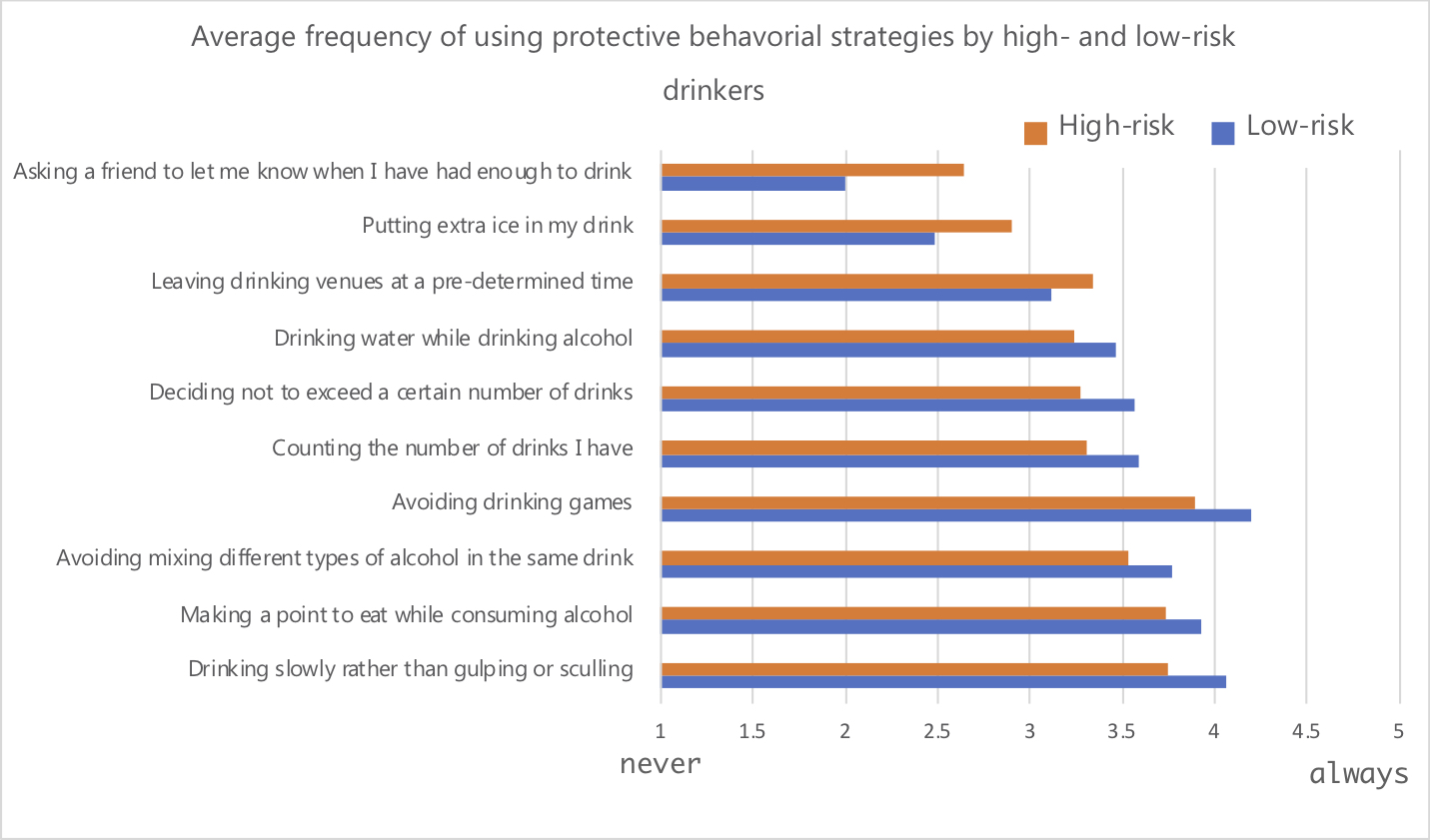The DRAM, Vol. 15(2) – Which strategies could help me control my drinking?
Protective behavioral strategies (PBS) are actions that people can take to control their drinking. For example, some people drink slowly, while others stop after a pre-planned specific number of drinks. People who use PBS regularly are less likely to experience alcohol-related harms than those who use them less often. This week, The DRAM reviews a study by Maria Dekker and colleagues that examined the use of specific PBS among people with high- and low-risk drinking behaviors.
What is the research question?
Which specific PBS are related to high- and low-risk drinking behaviors?
What did the researchers do?
The researchers recruited 1,343 participants from an Australian survey website to participate in a four week longitudinal study. Participants described how often they used PBS (e.g., putting ice in your drink, using a designated driver, avoiding drinking games) on a scale from 1 (never) to 5 (always). Participants also responded to questions about typical alcohol use behaviors (e.g., frequency of drinking, average amount consumed). The researchers classified participants who had five or more drinks in a single night at least once in the past year as high-risk drinkers and all others as low-risk drinkers. They used t-tests to assess differences in high- and low-risk drinkers’ use of PBS.
What did they find?
Low-risk drinkers more frequently engaged in seven of ten PBS, such as drinking slowly and eating while drinking. On the other hand, high-risk drinkers more frequently engaged in the remaining three PBS: asking a friend to let them know when they had enough to drink, putting extra ice in their drink, and leaving a drinking venue at a predetermined time (see Figure).
Figure. This figure reports only PBS where statistically significant differences existed between high- and low-risk drinkers. Click image to enlarge.
Why do these findings matter?
It is surprising that high-risk drinkers reported using some PBS more frequently than low-risk drinkers. This suggests that high-risk drinkers know about PBS but might not use them effectively. For example, high-risk drinkers might hope to reduce their risk by leaving a drinking venue at a specific time, but lose the protective benefit of leaving by drinking twice as much just before they leave or choosing a time to late to have a practical impact.
Every study has limitations. What were the limitations in this study?
The researchers classified risk by number of drinks consumed on an occasion, rather than actual experiences of alcohol-related harms. Participants’ reports might be inaccurate due to incorrect recall or misleading responses.
For more information:
Visit the National Institute on Alcohol Abuse and Alcoholism to learn more about the latest alcohol-related research. The BASIS addiction resources offers screening tools to help identify alcohol-related problems.
— Pat Williams
What do you think? Please use the comment link below to provide feedback on this article.
